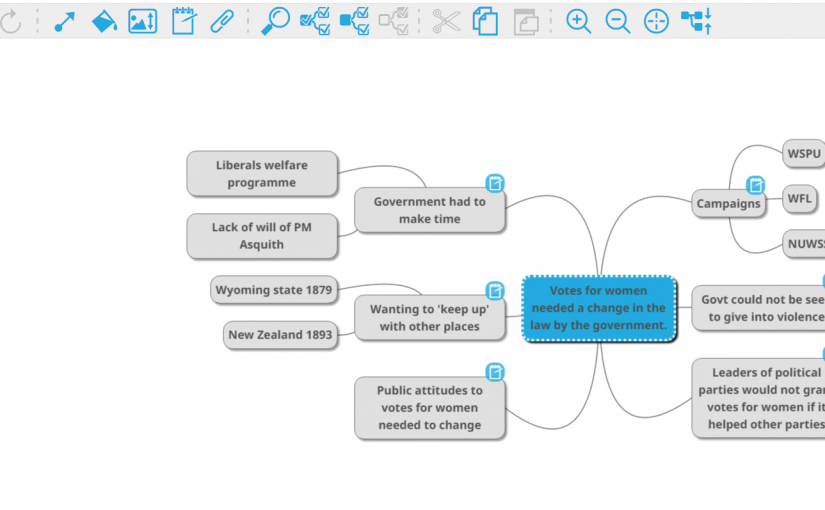One day as a home assignment I set my students the task of creating a mind map. Next day during the lesson one student said that she had found a really useful online tool for mind maps. She shared it with us and now I am sharing it with you. It’s called MindMup.
Why should I use MindMup?
Do it digitally to combine a mind map with depth of notes and other links:
The use of mind mapping during lessons is a well-known and effective tool to brainstorm ideas, show connections in thinking, and to revise ideas or concepts. We suggest using MindMup as an effective way to do this online. At its simplest, Mindmup is the same as a paper-based mindmap, just online. Mindmup is available with no ‘sign up’ at first.
The icons at the top of the screen make it straightforward to create a ‘root node’, ‘a sibling node’ and ‘a child node’. It is not possible to copy-paste large amounts of text and this forces students to summarise and select the most important information. The Mindmup has the advantage that you can add notes to each box that only appear if you click on the box. The overall connections are clear, but there is detail behind the basic structure. Summary notes can be linked to more detailed notes. In addition, pictures, web articles and film clips can be added. This means that very useful sets of revision notes can be constructed, from overall summary to greater detail. It would be useful to have a textbox function to add a title to the screen, but with this minor quibble, Mindmup is a good way to develop structured and layered notes.
Here are some other benefits:
- Students are able to collaborate together as a group on one mind map simultaneously. Students just need a Google account. Students share thoughts and discuss improvements, then share their final product.
- Students and teachers alike can save or share the material on Google Drive or print MindMups out for class discussions.
Where should it be used?
- ‘Wherever you usually mindmap!’ is the simple answer. Older students who have to make revision notes are likely to find it most useful. There are many complex topics that MindMup could help with. The complex causation of war in 1914, the different aspects of the Weimar Republic, and the consequences of the fall of the Berlin Wall for European politics are just three that spring to mind. Use MindMup wherever you require students to show and explain connected thinking.
How do we actually use MindMup?
MindMups are created via www.mindmup.com. You get the choice to create or open a MindMup. The best way to get to grips with this tool is to experiment for yourself with creating a MindMup. Start simply, just playing around with the three node functions: root, sibling and child. If you create a MindMup for use in class, simply put it on Google Drive and then ask students to click Open in MindMup Google so that they can work with what you have prepared for them.

There are many different structures on offer. There are structures to assist summarising, to enable comparison, to build arguments and many more. You can change the presentation structure of a pre-created MindMup to enable students to take a different perspective on the same material. For example, here is the same MindMup as before presented in a different format. You could, discuss with students which presentation is most effective for their argument. Ask them how emphasis changes in each presentation. Get them to see that the way they present ideas affects the impact they will have on their audience. Get them to see that their purpose will define what structures they choose to adopt. Making all this clear helps students to see the processes of historical thinking more clearly.

Finally, don’t trust me, here’s a student view!
MindMup helped us to discuss and sum up the different reasons for the collapse of the Weimar Republic. In cooperation with the whole classI found it amazingly effective to see the global picture in combination. I was able to organise all the information so that I could use it as effective evidence for my arguments. We could also go deeper, point by point to determine which reasons became more important and why. Argument mapping helps me to apply argument building strategy in my daily life.
